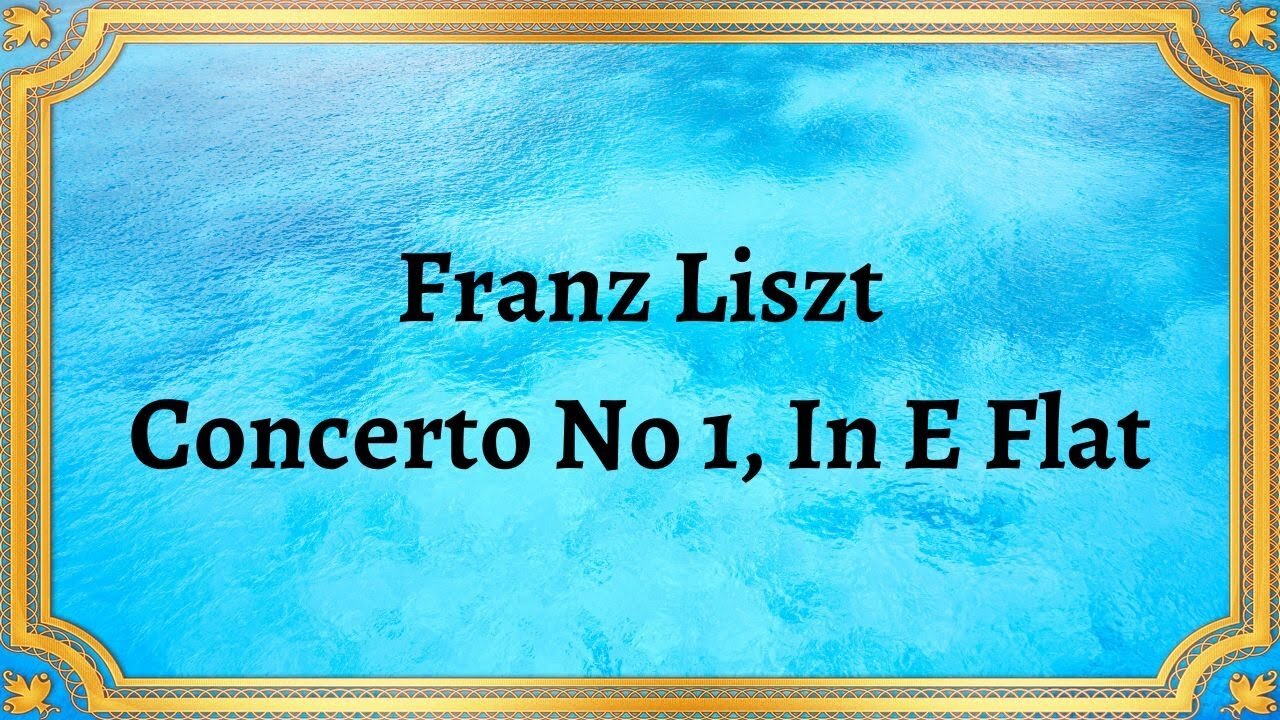Premium Only Content

Franz Liszt Concerto No 1, In E Flat
#FranzLiszt #ConcertoNo1 #InEFlat #Piano #RomanticEra #MusicalComposition #Virtuosity #SingleMovementConcerto #ThematicTransformation #HarmonicProgressions #LyricalCharacter #ClassicalMusic
Publication date 1950
Artur Rubinstein Pianist RCA Victor Symphony Orchestra Antal Dorati. Conductor
Franz Liszt's Concerto No. 1, in E-flat major, is a musical piece that played a significant role in the development of the Romantic era of classical music. It was composed in 1849 and premiered in Weimar, Germany in 1855 by Liszt himself as soloist, conducted by Hector Berlioz.
One of the most striking features of the concerto is its virtuosic pianistic writing. This piece demands technical excellence as well as expressive playing from the soloist throughout the entire composition. The concerto has three movements, with the first marked Allegro maestoso and lasting approximately five minutes. This movement has a commanding and majestic introduction before the soloist enters with a series of show-stopping runs and arpeggios that immediately announce their presence. The second movement is marked Quasi Adagio and creates a soothing contrast to the high energy of the first movement. It is a beautifully written lyric piece with some of the most profound emotional expression of the work. The final movement, Allegretto vivace, is characterized by its lively tempo, superb solo writing, and virtuosic cadenzas. It is a dramatic, energetic and triumphant finale to the concerto.
Liszt's Concerto No. 1 in E-flat major is considered a pioneer in the concept of the single-movement concerto. Unlike most concertos composed at the time, this piece connects the movements without interruption, creating a long musical narrative that is sustained throughout the composition. Liszt skillfully used various musical ideas and harmonic progressions to ensure the smooth progression of the piece's different sections.
In addition to its technical brilliance and virtuosity, the concerto has a strongly lyrical character that celebrates the Romantic aspirations of its composer. The use of innovative techniques, such as thematic transformation, allows the piece to maintain a sense of cohesiveness while also giving it a unique musical identity.
In conclusion, Franz Liszt's Concerto No. 1 in E-flat major is a highly acclaimed and virtuosic piano composition that is a testament to Liszt's exceptional composing skills. It demonstrates his influence in the musical history of the Romantic era and still captivates audiences today. Its technical excellence and expressive musicality ensure that it will remain a cornerstone of the classical piano repertoire.
You have the opportunity to support the channel https://destream.net/live/RadSiarAl/donate
-
 34:26
34:26
Classical music_Music Inspiration
2 months agoAram Khachaturian Concerto for Violin and Orchestra
1142 -
 8:07
8:07
Colion Noir
7 hours agoShould You Carry Non-Lethal Weapons For Self Defense?
36.1K50 -
 14:53
14:53
Forrest Galante
2 hours agoAustralia's Top 5 Deadliest Animals
13.8K8 -
 LIVE
LIVE
DLDAfterDark
2 hours ago $0.84 earnedDLD Live! What's The "best" PDW?? Considerations For Trunk/Truck Gun & Gats in Bags & Backpacks
261 watching -
 15:25
15:25
Exploring With Nug
13 hours ago $15.00 earnedBag of Phones Found While Searching For Missing Man In River!
59.4K19 -
 LIVE
LIVE
fuzzypickles168
2 hours agoLate Nite Jam Session - Rock Band 4 | Was: EA Sports WRC | 1 John 2:1-17
76 watching -
![Nintendo Switch It UP Saturdays with The Fellas: LIVE - Episode #13 [Mario Kart 8 Deluxe]](https://1a-1791.com/video/fww1/97/s8/1/1/g/A/z/1gAzy.0kob-small-Nintendo-Switch-It-UP-Satur.jpg) 3:33:38
3:33:38
MoFio23!
12 hours agoNintendo Switch It UP Saturdays with The Fellas: LIVE - Episode #13 [Mario Kart 8 Deluxe]
28.2K -
 23:24
23:24
MYLUNCHBREAK CHANNEL PAGE
13 hours agoDams Destroyed Turkey
79.9K65 -
 LIVE
LIVE
SpartanTheDogg
5 hours agoPro Halo Player
256 watching -
 11:29
11:29
Tundra Tactical
5 hours ago $2.80 earnedGEN Z Brit 3D Prints a WORKING Gun Pt.3!
39.7K3